Morphine, a potent opioid analgesic, has been a cornerstone of pain management for centuries, renowned for its efficacy in alleviating severe pain. Its use spans medical fields from acute care to palliative care, where its ability to provide profound relief is invaluable. Despite its effectiveness, morphine’s potential for addiction and abuse necessitates a nuanced understanding of its administration and monitoring. Understanding the multifaceted nature of morphine is essential for healthcare professionals to navigate its use responsibly and effectively in patient care.
What is Morphine?
Morphine refers to a potent opioid analgesic medication commonly used for managing moderate to severe pain. Morphine acts on the central nervous system by binding to opioid receptors, primarily the mu-opioid receptors, which are located in the brain and spinal cord. By binding to these receptors, morphine reduces the perception of pain and alters the emotional response to pain. Morphine is commonly used for patients that experienced surgery, trauma, or in patients with cancer. It is also used to alleviate pain in palliative care and end-of-life situations. It is one of the oldest and most effective pain-relieving medications known to humanity.
Generic Name
The generic name of morphine is simply “morphine.” In pharmacology, the generic name refers to the chemical compound or active ingredient of a medication, regardless of its brand name or manufacturer. So, whether it’s branded as morphine sulfate, morphine hydrochloride, or any other formulation, the active ingredient remains morphine.
Brand Names
Morphine is available under various brand names, each representing different formulations, dosages, and manufacturers. Some common brand names of morphine include MS Contin, MS Contin SRT, Astramorph, Doloral, Kadian, Avinza, Oramorph SR, Roxanol, Duramorph, Morphine Sulfate ER, Embeda, Arymo ER, Infumorph, M-Eslon, Morphabond ER, Morphine EPD, Morphine Extra Forte, Morphine Forte, Morphine HP, Morphine LP Epidural, M.O.S., M.O.S.-SR, and Statex.
Drug Classification of Morphine
The drug classification of morphine is:
Therapeutic Class
- opioid analgesics
Pharmacologic Class
- opioid agonists
Indications and Therapeutic Effects
Morphine is primarily indicated for the management of moderate to severe pain. Its therapeutic effects include:
1. Pain Relief. Morphine acts centrally on the nervous system to alleviate pain by binding to opioid receptors in the brain and spinal cord, thereby reducing the perception of pain.
2. Analgesia. Morphine is effective in providing relief from various types of acute and chronic pain, including postoperative pain, cancer pain, traumatic pain, and pain associated with terminal illnesses.
3. Sedation. Morphine can induce a state of relaxation and sedation, which can be beneficial for patients experiencing severe pain and distress.
4. Anxiolysis. Morphine may help alleviate anxiety associated with pain by inducing a sense of calmness and reducing apprehension.
5. Cough Suppression. Morphine has antitussive effects and is sometimes used to suppress severe coughing, particularly in cases where coughing is disruptive or causing discomfort.
6. Dyspnea Relief. In palliative care settings, morphine may be used to relieve dyspnea (shortness of breath) in patients with advanced respiratory disease or end-of-life care.
Mechanism of Action
The mechanism of action of morphine involves its binding to mu-opioid receptors, leading to inhibition of neurotransmitter release, modulation of neuronal excitability, and activation of reward pathways, ultimately resulting in pain relief, sedation, and potential euphoria. Here’s a thorough explanation:
1. Opioid Receptor Binding. Morphine binds primarily to mu-opioid receptors, which are G-protein-coupled receptors located in various regions of the brain and spinal cord, including the periaqueductal gray matter, spinal cord dorsal horn, and the brainstem.
2. Inhibition of Neurotransmitter Release. When morphine binds to mu-opioid receptors, it inhibits the release of neurotransmitters such as substance P, gamma-aminobutyric acid (GABA), and glutamate. This inhibition leads to reduced transmission of pain signals along the pain pathways in the central nervous system.
3. Activation of G-Protein Pathways. Morphine binding to mu-opioid receptors also activates intracellular G-protein signaling pathways. This activation leads to various downstream effects, including the inhibition of adenylyl cyclase, which reduces cyclic adenosine monophosphate (cAMP) levels, and the activation of potassium channels, which hyperpolarizes neurons and reduces their excitability.
4. Inhibition of Nociceptive Transmission. By inhibiting the release of neurotransmitters involved in nociceptive transmission and modulating neuronal excitability, morphine reduces the perception of pain and alters the emotional response to pain.
5. Activation of Reward Pathways. In addition to its analgesic effects, morphine also activates reward pathways in the brain, particularly the mesolimbic dopamine system. This activation leads to feelings of euphoria and pleasure, contributing to the drug’s potential for abuse and addiction.
6. Central and Peripheral Effects. Morphine exerts its effects both centrally within the brain and spinal cord, where it modulates pain processing, and peripherally in the gastrointestinal tract, where it can cause constipation due to reduced gut motility.
Precautions and Contraindications
Precautions and contraindications are important considerations when prescribing or administering morphine due to its potential for side effects, interactions, and risks. It’s essential for healthcare providers to carefully assess patients for these precautions and contraindications before initiating morphine therapy and to monitor patients closely for adverse effects throughout treatment.
Precautions
1. Respiratory Depression. Morphine can cause respiratory depression, particularly in high doses or when used concomitantly with other respiratory depressants such as benzodiazepines or alcohol. Patients should be closely monitored for signs of respiratory depression, and the dosage should be adjusted accordingly.
2. Sedation and Impaired Alertness. Morphine can cause sedation and impaired alertness, which may affect the patient’s ability to operate machinery or drive. Patients should be advised to avoid activities requiring mental alertness until they know how morphine affects them.
3. Hypotension. Morphine can cause hypotension, especially in patients who are hypovolemic or have pre-existing cardiovascular conditions. Blood pressure should be monitored, and caution should be exercised when administering morphine to patients with hypotension.
4. Constipation. Morphine commonly causes constipation due to its effects on gut motility. Patients should be counseled on the importance of maintaining adequate hydration, fiber intake, and regular bowel movements to prevent constipation. Laxatives or stool softeners may be prescribed prophylactically.
5. Physical Dependence and Withdrawal. Prolonged use of morphine can lead to physical dependence, and abrupt cessation or rapid dose reduction can precipitate withdrawal symptoms. Morphine should be tapered gradually when discontinuing therapy to minimize withdrawal effects.
Contraindications
1. Hypersensitivity. Patients with a known hypersensitivity or allergy to morphine or other opioids should not receive morphine due to the risk of allergic reactions, including anaphylaxis.
2. Respiratory Insufficiency. Morphine is contraindicated in patients with severe respiratory insufficiency, such as acute respiratory distress syndrome (ARDS) or severe chronic obstructive pulmonary disease (COPD), as it can further suppress respiratory function and exacerbate respiratory failure.
3. Paralytic Ileus. Morphine is contraindicated in patients with paralytic ileus, a condition characterized by impaired gastrointestinal motility, as it can worsen bowel obstruction and lead to complications such as perforation.
4. Acute Alcohol Intoxication. Morphine should not be administered to patients with acute alcohol intoxication, as it can potentiate the central nervous system depressant effects of alcohol, leading to severe respiratory depression, coma, or death.
5. Head Injury or Increased Intracranial Pressure. Morphine is contraindicated in patients with head injury or increased intracranial pressure (ICP), as it can further depress respiratory drive and potentially exacerbate cerebral edema.
6. Monoamine Oxidase Inhibitors (MAOIs). Morphine should not be used concurrently with MAOIs or within 14 days of discontinuing MAOI therapy due to the risk of serotonin syndrome, a potentially life-threatening condition characterized by hyperthermia, agitation, and altered mental status.
Drug Interactions
It’s important for nurses and healthcare providers to assess patients for potential drug interactions before initiating morphine therapy and to monitor patients closely for adverse effects when using morphine concurrently with other medications.
Drug-Drug
Morphine interacts with various drugs, and these interactions can lead to potentially harmful effects or reduce the efficacy of morphine. Here’s a list of drug interactions:
1. Central Nervous System Depressants. Concurrent use of other central nervous system (CNS) depressants, such as benzodiazepines, barbiturates, sedatives, hypnotics, or alcohol, can potentiate the sedative and respiratory depressant effects of morphine, increasing the risk of profound sedation, respiratory depression, coma, or death.
2. Monoamine Oxidase Inhibitors (MAOIs). MAOIs can increase the risk of serotonin syndrome when used concomitantly with morphine. Serotonin syndrome is characterized by symptoms such as hyperthermia, agitation, confusion, tremors, and diaphoresis. Concurrent use of MAOIs and morphine should be avoided or carefully monitored.
3. Tricyclic Antidepressants (TCAs). TCAs can enhance the analgesic effects of morphine but also increase the risk of respiratory depression and other CNS depressant effects. Close monitoring is necessary when using TCAs and morphine together.
4. Selective Serotonin Reuptake Inhibitors (SSRIs) and Serotonin-Norepinephrine Reuptake Inhibitors (SNRIs). Concurrent use of SSRIs or SNRIs with morphine can increase the risk of serotonin syndrome due to serotoninergic effects. Close monitoring is necessary, and patients should be monitored for signs and symptoms of serotonin syndrome.
5. Anticholinergic Drugs. Anticholinergic drugs, such as antimuscarinics or antispasmodics, can increase the risk of constipation when used concomitantly with morphine. Patients should be monitored for constipation and managed accordingly with laxatives or stool softeners.
6. Antihypertensive Drugs. Morphine can cause hypotension, especially in susceptible individuals. Concurrent use of antihypertensive drugs can potentiate this effect, leading to severe hypotension and cardiovascular collapse. Blood pressure should be closely monitored, and the dosage of antihypertensive drugs may need to be adjusted.
7. Anticoagulant Drugs. Morphine can enhance the effects of anticoagulant drugs, such as warfarin, by increasing the risk of bleeding. Patients receiving both morphine and anticoagulants should be closely monitored for signs of bleeding, and the dosage of anticoagulant drugs may need to be adjusted.
8. CYP450 Enzyme Inhibitors and Inducers. Drugs that inhibit or induce cytochrome P450 (CYP450) enzymes can affect the metabolism of morphine, leading to altered plasma concentrations and potential toxicity or reduced efficacy. Examples include fluoxetine (CYP2D6 inhibitor) and rifampin (CYP3A4 inducer).
9. Gastrointestinal Motility Agents. Drugs that affect gastrointestinal motility, such as prokinetic agents (e.g., metoclopramide), can alter the absorption and distribution of morphine, potentially affecting its efficacy or leading to adverse effects.
10. Antiemetic Drugs. Concurrent use of antiemetic drugs, such as ondansetron or promethazine, with morphine can enhance the sedative effects and increase the risk of respiratory depression. Patients should be monitored for CNS depression and respiratory status.
Drug-Natural Products
Interactions between morphine and natural products can occur due to various mechanisms, including alterations in drug metabolism, pharmacokinetics, or pharmacodynamics. Here’s a list of potential drug-natural product interactions with morphine:
1. St. John’s Wort. St. John’s Wort is known to induce cytochrome P450 enzymes, including CYP3A4 and CYP2C9, which can accelerate the metabolism of morphine. This may lead to reduced plasma concentrations of morphine, potentially decreasing its efficacy.
2. Grapefruit Juice. Grapefruit juice inhibits the activity of intestinal CYP3A4 enzymes, leading to increased systemic exposure to morphine. This can potentiate the analgesic effects and side effects of morphine, including sedation and respiratory depression.
3. Kratom. Kratom contains alkaloids that act as mu-opioid receptor agonists, similar to morphine. Concurrent use of kratom with morphine may increase the risk of opioid-related side effects, including respiratory depression, sedation, and dependence.
4. Valerian Root. Valerian root has sedative properties and may potentiate the sedative effects of morphine, leading to increased CNS depression and respiratory depression. Patients should be monitored for excessive sedation and respiratory compromise.
5. Kava Kava. Kava kava has CNS depressant effects and may enhance the sedative effects of morphine, leading to increased CNS depression and respiratory depression. Concurrent use should be avoided or closely monitored.
6. Chamomile. Chamomile contains compounds that have sedative effects and may potentiate the sedative effects of morphine, leading to increased CNS depression and respiratory depression. Patients should be monitored for excessive sedation.
7. Passionflower. Passionflower has sedative properties and may enhance the sedative effects of morphine, leading to increased CNS depression and respiratory depression. Concurrent use should be avoided or closely monitored.
8. CBD (Cannabidiol) Products. CBD products may interact with morphine through various mechanisms, including inhibition of drug metabolism enzymes and modulation of opioid receptors. The effects of concurrent use of CBD and morphine on analgesia and side effects are not well-studied and should be approached with caution.
9. Cannabis. Cannabis contains cannabinoids that may interact with morphine through various mechanisms, including modulation of opioid receptors and neurotransmitter systems. Concurrent use may potentiate the analgesic effects of morphine but also increase the risk of CNS depression and respiratory depression.
Drug-Food
Drug-food interactions with morphine can influence its absorption, metabolism, or effectiveness. Here’s a list of potential drug-food interactions:
1. Grapefruit Juice. Grapefruit juice contains compounds that inhibit the activity of intestinal CYP3A4 enzymes, which can lead to increased systemic exposure to morphine. This can potentiate the analgesic effects and side effects of morphine, including sedation and respiratory depression.
2. High-Fat Meals. Consuming high-fat meals shortly before or after taking morphine can delay its absorption and onset of action. Patients may experience delayed pain relief as a result. It’s generally recommended to take morphine on an empty stomach or with a light meal to optimize absorption.
3. Fiber-Rich Foods. High-fiber foods, such as bran cereals, whole grains, and vegetables, can delay gastric emptying and may reduce the rate of absorption of morphine. Patients should be advised to maintain a consistent dietary fiber intake to minimize variations in morphine absorption.
4. Alcohol. Alcohol can enhance the sedative effects of morphine and increase the risk of CNS depression and respiratory depression. Patients should be cautioned against consuming alcohol while taking morphine, as it can potentiate its effects and increase the risk of adverse reactions.
5. Tyramine-Rich Foods. Tyramine-rich foods, such as aged cheeses, cured meats, and fermented products, can interact with morphine in patients taking monoamine oxidase inhibitors (MAOIs). Tyramine can induce hypertensive crisis in patients taking MAOIs and morphine concurrently.
6. Caffeine. Caffeine can interact with morphine through various mechanisms, including modulation of adenosine receptors and central nervous system stimulation. Concurrent use may enhance the analgesic effects of morphine but also increase the risk of CNS stimulation and agitation.
7. Calcium-rich foods. Calcium-rich foods, such as dairy products and fortified beverages, can interfere with the absorption of morphine when taken concurrently. Patients should be advised to avoid consuming calcium-rich foods within a few hours of taking morphine to minimize potential interactions.
8. Ginger. Ginger contains compounds that may have analgesic properties and can interact with morphine to enhance pain relief. However, concurrent use may also increase the risk of CNS depression and should be monitored closely.
9. Turmeric. Turmeric contains curcumin, which has anti-inflammatory properties and may enhance the analgesic effects of morphine. However, concurrent use may also increase the risk of bleeding due to additive effects on platelet function.
10. Licorice. Licorice contains glycyrrhizin, which can prolong the half-life of morphine by inhibiting its metabolism. Concurrent use may increase the risk of morphine toxicity and adverse effects.
Adverse Effects
Morphine, like all opioids, can cause a range of side effects and adverse effects, which can vary in severity depending on factors such as the dose, route of administration, and individual patient characteristics. Here’s a list of potential side effects and adverse effects of morphine:
Common Side Effects
1. Nausea and Vomiting. Nausea and vomiting are common side effects of morphine, especially when treatment is initiated or the dose is increased. These symptoms may improve with continued use or the addition of antiemetic medications.
2. Constipation. Morphine slows gastrointestinal motility, leading to constipation. Patients should be encouraged to maintain adequate hydration, dietary fiber intake, and physical activity to mitigate this side effect. Laxatives or stool softeners may be prescribed as needed.
3. Sedation and Drowsiness. Morphine can cause sedation and drowsiness, which may impair cognitive function and motor coordination. Patients should be advised to avoid driving or operating machinery until they know how morphine affects them.
4. Dizziness and Lightheadedness. Morphine can cause dizziness and lightheadedness, particularly when standing up from a sitting or lying position. Patients should change positions slowly to minimize the risk of falls.
5. Respiratory Depression. Respiratory depression is a potentially serious side effect of morphine, especially at high doses or in opioid-naive patients. It is characterized by decreased respiratory rate, shallow breathing, and hypoxemia. Respiratory function should be monitored closely, especially during initiation of therapy or dose adjustments.
Less Common Side Effects
1. Pruritus. Itching, or pruritus, is a less common side effect of morphine that may occur due to histamine release or allergic reaction. Antihistamines may be prescribed to alleviate itching if necessary.
2. Urinary Retention. Morphine can cause urinary retention by reducing bladder contractility and increasing sphincter tone. Patients should be monitored for signs of urinary retention, and intermittent catheterization may be necessary in severe cases.
3. Confusion and Delirium. Elderly patients or those with pre-existing cognitive impairment may experience confusion or delirium with morphine use. Close monitoring and dose adjustments may be necessary in these populations.
Adverse Effects
1. Hypotension. Morphine can cause hypotension, especially in patients who are hypovolemic or have pre-existing cardiovascular conditions. Blood pressure should be monitored, and caution should be exercised when administering morphine to patients with hypotension.
2. Physical Dependence and Withdrawal. Prolonged use of morphine can lead to physical dependence, and abrupt cessation or rapid dose reduction can precipitate withdrawal symptoms. Morphine should be tapered gradually when discontinuing therapy to minimize withdrawal effects.
3. Tolerance. Tolerance to the analgesic effects of morphine may develop with prolonged use, requiring higher doses to achieve the same level of pain relief. Close monitoring and dose adjustments may be necessary to manage tolerance effectively.
4. Addiction and Misuse. Morphine has a high potential for addiction and misuse, especially in patients with a history of substance abuse or addiction. Healthcare providers should carefully assess patients for risk factors and monitor for signs of addiction or diversion.
5. Serotonin Syndrome. Morphine can interact with serotonergic medications, leading to serotonin syndrome, a potentially life-threatening condition characterized by hyperthermia, agitation, confusion, tremors, and diaphoresis. Concurrent use of serotonergic medications should be avoided or closely monitored.
6. Anaphylaxis. Although rare, morphine can cause allergic reactions, including anaphylaxis, in susceptible individuals. Patients should be monitored for signs of allergic reactions, such as rash, itching, swelling, or difficulty breathing.
Serious Adverse Effects
1. Severe Respiratory Depression. Severe respiratory depression can occur with high doses of morphine or in opioid-naive patients. Prompt intervention with naloxone, an opioid antagonist, may be necessary to reverse respiratory depression and restore normal breathing.
2. Cardiac Arrest. In rare cases, morphine can cause bradycardia or cardiac arrest, especially in patients with pre-existing cardiac conditions or when used concomitantly with other medications that depress cardiac function.
3. Gastrointestinal Perforation. Chronic use of morphine can increase the risk of gastrointestinal complications, including gastrointestinal perforation, particularly in patients with pre-existing gastrointestinal disorders or those taking nonsteroidal anti-inflammatory drugs (NSAIDs) or corticosteroids.
Administration Considerations
Available Forms
Morphine is available in various forms to suit different patient needs and routes of administration. Here are some common available forms of morphine:
1. Oral Tablets/Capsules. Morphine sulfate is available in immediate-release (IR) and extended-release (ER) formulations as oral tablets or capsules. Immediate-release formulations provide rapid pain relief, while extended-release formulations provide around-the-clock pain control with less frequent dosing.
2. Oral Solutions/Suspensions. Morphine sulfate oral solutions or suspensions are available for patients who have difficulty swallowing tablets or capsules. These formulations provide flexible dosing options and are often used in pediatric or elderly populations.
3. Oral Concentrate. Morphine sulfate oral concentrate is a highly concentrated liquid formulation that allows for accurate dosing in patients requiring higher doses of morphine or who have difficulty swallowing larger volumes of liquid.
4. Oral Immediate-Release Solution for Injection. Morphine sulfate immediate-release solution for injection is available for use in patients who cannot tolerate oral medications or require rapid pain relief. It is administered orally and has a fast onset of action.
5. Intravenous (IV) Injection. Morphine sulfate injection is available for intravenous administration in hospital settings, providing rapid pain relief in acute situations, such as postoperative pain or trauma.
6. Subcutaneous Injection. Morphine sulfate injection is also available for subcutaneous administration, providing an alternative route for patients who cannot tolerate oral medications or have difficulty accessing veins for intravenous administration.
7. Rectal Suppositories. Morphine sulfate rectal suppositories are available for patients who cannot tolerate oral medications or require alternative routes of administration. They provide systemic absorption through the rectal mucosa and are often used in palliative care or for patients with severe pain or nausea.
8. Transdermal Patch. Morphine sulfate transdermal patches are available for continuous, around-the-clock pain control in patients with chronic pain. The patch delivers morphine through the skin, providing long-lasting relief and minimizing the need for frequent dosing.
9. Epidural Injection. Morphine sulfate injection is available for epidural administration in patients requiring regional anesthesia or analgesia for surgical procedures or chronic pain management.
Dosage for Neonates
- IM, IV, Subcut (Neonates): 0.05 mg/kg q 4 – 8 hr, maximum dose: 0.1 mg/kg. Use preservative-free formulation.
- IV (Neonates): Continuous infusion — 0.01 – 0.03 mg/kg/hr.
Dosage for Children
- PO, Rect (Children <50 kg): Usual starting dose for moderate to severe pain in opioid-naive patients — 0.3 mg/kg q 3 – 4 hr initially.
- PO (Children >1 mo): Prompt-release tablets and solution — 0.2 – 0.5 mg/kg/dose q 4 – 6 hr as needed. Controlled-release tablet — 0.3 – 0.6 mg/kg/dose q 12 hr.
- IM, IV, Subcut (Children <50 kg): Usual starting dose for moderate to severe pain in opioid-naive patients — 0.05 – 0.2 mg/kg q 3 – 4 hr, maximum: 15 mg/dose.
- IV, Subcut (Children >1 mo): Continuous infusion, postoperative pain — 0.01 – 0.04 mg/kg/hr. Continuous infusion, sickle cell or cancer pain— 0.02 – 2.6 mg/kg/hr.
- Epidural (Children >1 mo): 0.03 – 0.05 mg/kg, maximum dose: 0.1 mg/kg or 5 mg/24 hr. Use preservative-free formulation.
Dosage for Adults
- PO, Rect (Adults ≥50 kg): Usual starting dose for moderate to severe pain in opioid-naive patients— 30 mg q 3 – 4 hr initially or once 24-hr opioid requirement is determined, convert to extended-release morphine by administering total daily oral morphine dose every 24 hr (as Kadian or other ER capsules), 50% of the total daily oral morphine dose every 12 hr (as Arymo ER, Kadian, Morphabond, MS Contin), or 33% of the total daily oral morphine dose every 8 hr (as Arymo ER, MS Contin). The dose of ER capsules (not Kadian) should not exceed 1600 mg/day because of the fumaric acid in the formulation.
- PO, Rect (Adults): Usual starting dose for moderate to severe pain in opioid-naive patients — 0.3 mg/kg q 3 – 4 hr initially.
- IM, IV, Subcut (Adults ≥50 kg): Usual starting dose for moderate to severe pain in opioid-naive patients—4–10 mg q 3–4 hr. MI—8–15 mg, for very severe pain additional smaller doses may be given every 3–4hr.
- IM, IV, Subcut (Adults): Usual starting dose for moderate to severe pain in opioid-naive patients — 0.05 – 0.2 mg/kg q 3 – 4 hr, maximum: 15 mg/dose.
- IV, Subcut (Adults): Continuous infusion — 0.8 – 10 mg/hr; may be preceded by a bolus of 15 mg (infusion rates vary greatly; up to 80 mg/hr have been used).
- Epidural (Adults): Intermittent injection — 5 mg/day (initially); if relief is not obtained at 60 min, 1 – 2 mg increments may be made (total dose not to exceed 10 mg/day. Continuous infusion — 2 – 4 mg/24 hr; may increase by 1 – 2 mg/day (up to 30 mg/day).
- IT (Adults): 0.2 – 1 mg. Use preservative-free formulation.
Pharmacokinetics
The pharmacokinetics of morphine involve a complex process of absorption, distribution, metabolism, and excretion within the body.
1. Absorption. Morphine can be absorbed through various routes including oral, intravenous, intramuscular, subcutaneous, rectal, and transdermal administration. Intravenous administration provides the fastest onset of action, while oral administration results in slower absorption due to first-pass metabolism in the liver.
2. Distribution. After absorption, morphine distributes throughout the body via the bloodstream, crossing the blood-brain barrier to reach its primary site of action in the central nervous system. Morphine is highly lipophilic and readily penetrates tissues, including the brain, lungs, liver, and kidneys.
3. Protein Binding. Premature infants: <20%; Adults: 35%.
4. Metabolism. Morphine undergoes metabolism primarily in the liver. The main metabolic pathway involves glucuronidation mediated by the enzyme UDP-glucuronosyltransferase (UGT). This process produces two primary metabolites: morphine-3-glucuronide (M3G) and morphine-6-glucuronide (M6G). M6G, in particular, has significant analgesic activity. Other minor metabolic pathways include N-demethylation and conjugation with sulfate.
5. Excretion. The metabolites of morphine, M3G, and M6G, along with a small fraction of unchanged morphine, are excreted primarily via the kidneys. Urinary excretion accounts for the elimination of approximately 90% of a morphine dose, with a small amount excreted in feces. Renal impairment can prolong the elimination half-life of morphine and its metabolites.
6. Half-life. Premature neonates: 10 – 20 hr; Neonates: 7.6 hr; Infants 1 – 3 mo: 6.2 hr; Children 6 mo – 2.5 yr: 2.9 hr; Children 3–6 yr: 1–2 hr; Children 6–19 yr with sickle cell disease: 1.3 hr; Adults: 2 – 4 hr. The elimination half-life of morphine varies but is generally in the range of 2 to 4 hours. However, the half-life of M6G is longer than that of morphine itself, contributing to the prolonged duration of action observed with some morphine formulations.
7. Factors affecting pharmacokinetics. Various factors can influence the pharmacokinetics of morphine, including age, hepatic function, renal function, genetic polymorphisms in metabolizing enzymes, concurrent use of medications that affect hepatic enzymes or renal function, and individual variations in drug absorption and metabolism.
Nursing Considerations for Morphine
Nursing considerations for morphine administration are vital in ensuring safe and effective pain management. Nurses play a crucial role in assessing patients’ pain levels, monitoring for potential side effects such as respiratory depression, and educating patients on proper medication use. With a comprehensive understanding of pharmacology and patient-specific factors, nurses tailor care plans to optimize pain relief while minimizing risks associated with morphine therapy.
Nursing Assessment
There are several important aspects of a nursing assessment for a patient taking morphine, including:
1. Assess intensity, location, duration, and quality of pain.
Morphine is commonly prescribed for moderate to severe pain relief. Assessment of pain intensity, location, duration, and quality using standardized pain assessment tools (e.g., Numeric Rating Scale, Visual Analog Scale) provides baseline data for evaluating the effectiveness of morphine therapy and guiding subsequent pain management interventions.
2. Review patient’s medical history, including any allergies, previous opioid use, concurrent medications, and comorbidities.
Understanding the patient’s medical history, including any allergies, previous opioid use, concurrent medications, and comorbidities such as respiratory or renal impairment, helps identify potential risk factors for adverse effects or drug interactions with morphine.
3. Monitor patient’s vital signs and respiratory status.
Morphine can cause respiratory depression, particularly in patients who are opioid-naive or have underlying respiratory conditions. Monitoring vital signs, including respiratory rate, oxygen saturation, and level of consciousness, before and after morphine administration helps detect signs of respiratory depression and guide appropriate interventions.
4. Assess patient’s baseline level of sedation and monitor levels of alertness.
Morphine can induce sedation and central nervous system depression. Assessing the patient’s baseline level of sedation and monitoring for changes in alertness or responsiveness helps identify signs of over-sedation and prompts adjustments in morphine dosage or frequency to minimize the risk of respiratory depression and sedation-related complications.
5. Assess patient’s bowel habits such as frequency and consistency.
Morphine use is associated with opioid-induced constipation due to its effects on gastrointestinal motility. Assessing the patient’s bowel habits, including frequency, consistency, and any symptoms of constipation, guides the implementation of preventive measures (e.g., stool softeners, laxatives, dietary modifications) to mitigate opioid-induced bowel dysfunction.
6. Assess patient’s emotional well-being, social interactions, and functional status.
Chronic pain conditions requiring morphine therapy can impact the patient’s emotional well-being, social interactions, and functional status. Conducting a psychosocial assessment helps identify factors contributing to pain perception, coping mechanisms, social support networks, and potential barriers to pain management adherence, facilitating holistic care planning and patient-centered interventions.
7. Assess patient’s functional status, mobility, and limitations related to pain.
Pain can significantly impair the patient’s ability to perform ADLs and engage in meaningful activities. Assessing functional status, mobility, and limitations related to pain helps establish realistic treatment goals, tailor pain management strategies to the patient’s individual needs, and monitor functional improvements over time.
8. Assess patient’s level of health literacy, understanding of pain management principles, and knowledge of morphine use.
Patient education plays a crucial role in promoting safe and effective morphine therapy. Assessing the patient’s level of health literacy, understanding of pain management principles, and knowledge of morphine use, including proper medication administration, potential side effects, and strategies for managing adverse reactions, helps tailor educational interventions to address specific learning needs and enhance treatment adherence.
9. Monitor for common adverse effects of morphine such as nausea, vomiting, pruritus, urinary retention, and hypotension.
Early recognition and management of adverse effects minimize patient discomfort and improve treatment tolerability, ensuring continuity of morphine therapy and optimizing pain management outcomes.
10. Assess geriatric patients frequently.
Older adults are more sensitive to the effects of opioid analgesics and may experience side effects and respiratory complications more frequently.
11. Assess pediatric patients frequently.
Children are more sensitive to the effects of opioid analgesics and may experience respiratory complications, excitability, and restlessness more frequently.
12. Assess risk for opioid addiction, abuse, or misuse before administration.
Abuse or misuse of extended-release preparations by crushing, chewing, snorting, or injecting dissolved product will result in uncontrolled delivery of morphine and can result in overdose and death.
13. Monitor patient’s laboratory values.
Morphine may increase plasma amylase and lipase levels.
Nursing Diagnosis
1. Acute Pain. Morphine is commonly administered for acute pain relief, particularly postoperative or trauma-related pain. Nursing interventions focus on assessing and managing pain intensity, promoting comfort, and monitoring for adverse effects of morphine therapy.
2. Potential Respiratory Compromise. Morphine can depress the respiratory drive, leading to hypoventilation or respiratory arrest, especially in opioid-naive or high-risk patients. Nursing interventions include respiratory monitoring, oxygen therapy as needed, and prompt recognition and management of respiratory compromise.
3. Risk for Constipation. Morphine use is associated with decreased gastrointestinal motility and constipation. Nursing interventions focus on preventive measures such as stool softeners, laxatives, dietary fiber, and adequate hydration to mitigate opioid-induced constipation and promote bowel regularity.
4. Risk for Injury. Morphine can induce sedation and CNS depression, increasing the risk of falls, injury, and impaired cognitive function. Nursing interventions include fall precautions, maintaining a safe environment, and frequent assessment of sedation levels to prevent adverse events and ensure patient safety.
5. Risk for Infection. Prolonged opioid therapy, including morphine, can suppress the immune system and increase the risk of infections. Nursing interventions focus on promoting infection prevention strategies, such as hand hygiene, aseptic techniques, and monitoring for signs of infection to minimize the risk of infectious complications.
6. Deficient knowledge. Some patients may not be aware of the proper dosing instructions or potential side effects of morphine and may benefit from education on these topics.
Morphine Nursing Interventions
1. Administer morphine according to the prescribed route, dose, and frequency, ensuring accurate documentation and adherence to safety protocols.
Proper medication administration minimizes dosing errors and ensures the timely delivery of pain relief, promoting therapeutic efficacy while reducing the risk of adverse reactions and medication errors.
2. Implement preventive measures for opioid-induced constipation (OIC) such as stool softeners, laxatives, fiber supplements, and adequate hydration.
Morphine use is associated with decreased gastrointestinal motility, leading to constipation, which can adversely affect patient comfort and quality of life, necessitating proactive management strategies.
3. Implement fall prevention measures, such as keeping the bed in the lowest position, using bed rails, providing assistance with ambulation, and ensuring a clutter-free environment.
Morphine-induced sedation and dizziness can increase the risk of falls and injuries, particularly in elderly or debilitated patients, highlighting the importance of preventive measures to enhance patient safety.
Patient Education and Teaching
1. Educate patients and caregivers about morphine therapy, including proper medication administration, potential side effects, signs of respiratory depression, and strategies for managing adverse reactions.
Patient education promotes medication adherence, enhances self-management skills, and empowers patients to actively participate in their pain management, fostering safer and more effective morphine use.
2. Educate patients about the importance of adhering to prescribed morphine dosing schedules and using complementary pain management strategies (e.g., relaxation techniques, positioning, distraction) to enhance pain relief.
Encouraging active participation in pain management empowers patients to take control of their pain and improve treatment outcomes, fostering a sense of autonomy and self-efficacy in managing their pain.
3. Inform patients about common side effects of morphine, such as nausea, constipation, drowsiness, and dizziness, and instruct them on strategies to manage these side effects effectively.
Increasing awareness of potential side effects enables patients to anticipate and manage them proactively, improving treatment tolerability and adherence while reducing anxiety and misconceptions about morphine therapy.
4. Educate patients and caregivers about the signs and symptoms of respiratory depression (e.g., slow or shallow breathing, difficulty breathing) and emphasize the importance of seeking immediate medical attention if these symptoms occur.
Enhancing awareness of respiratory depression risks promotes early recognition and timely intervention, minimizing the likelihood of serious respiratory complications and adverse outcomes associated with morphine therapy.
5. Instruct patients on the safe storage of morphine to prevent unauthorized access by others and the proper disposal of unused or expired medication following recommended guidelines.
Ensuring proper medication storage and disposal reduces the risk of accidental ingestion, diversion, or misuse of morphine, promoting medication safety and preventing potential harm to patients and others in the household.
6. Stress the importance of regular follow-up appointments with healthcare providers for ongoing pain assessment, medication evaluation, and adjustment of morphine therapy as needed.
Regular monitoring and follow-up allow healthcare providers to assess treatment effectiveness, monitor for adverse effects, and make timely adjustments to the treatment plan, optimizing pain management outcomes and patient satisfaction.
Evaluation and Desired Outcomes
Here are some desired outcomes for morphine therapy:
1. Pain relief. Decrease in pain intensity to a manageable level as reported by the patient (e.g., pain score reduced by ≥ 2 points on a numeric rating scale).
2. Improved functional status. Improvement in functional status, as evidenced by increased independence in ADLs and reduced limitations related to pain.
3. Adequate pain control with minimal adverse effects. Maintenance of optimal pain relief with minimal adverse effects, ensuring patient comfort and safety during morphine therapy.
4. Patient satisfaction. High levels of patient satisfaction with pain relief, treatment effectiveness, and overall care experience.
5. Compliance with treatment plan. High levels of patient adherence to the treatment plan, including medication schedules, follow-up appointments, and instructions for pain management and medication use.
7. Optimal bowel function. Maintenance of regular bowel function or implementation of interventions to manage opioid-induced constipation effectively, ensuring patient comfort and gastrointestinal health.
Recommended Resources
Our recommended nursing pharmacology resources and books:
Disclosure: Included below are affiliate links from Amazon at no additional cost from you. We may earn a small commission from your purchase which will help support us. Thank you! For more information, check out our privacy policy.
Pharm Phlash! Pharmacology Flash Cards #1 BEST SELLER!
Test-yourself review cards put critical clinical information for nearly 400 of the top generic medications at your fingertips. And, you can count on them for accuracy, because each card is based on content from Davis’s Drug Guide for Nurses. Increase your test scores in pharmacology class.

Focus on Pharmacology (8th Edition)
Focus on Nursing Pharmacology makes challenging concepts more approachable. Engaging learning features cultivate your clinical application, critical thinking and patient education capabilities. This updated 8th edition builds on your knowledge of physiology, chemistry and nursing fundamentals to help you conceptualize need-to-know information about each group of drugs.

Pharmacology Made Incredibly Easy (Incredibly Easy! Series®)
Nursing pharmacology guide offers step-by-step guidance so you can grasp the fundamentals in enjoyable Incredibly Easy style. This is the perfect supplement to class materials, offering solid preparation for NCLEX® as well as a handy refresher for experienced nurses. Colorfully illustrated chapters offer clear, concise descriptions of crucial nursing pharmacology concepts and procedures.

Lehne’s Pharmacology for Nursing Care (11th Edition)
The Eleventh Edition of Lehne’s Pharmacology for Nursing Care provides a thorough understanding of key drugs and their implications for nursing care. This text, written by renowned nursing educators, helps you comprehend and apply pharmacology principles. A clear and engaging writing style simplifies complex concepts, making even the most challenging pharmacology content enjoyable. We recommend this book if you want a comprehensive nursing pharmacology guide.

Nursing Drug Handbook
Nursing2023 Drug Handbook delivers evidence-based, nursing-focused drug monographs for nearly 3700 generic, brand-name, and combination drugs. With a tabbed, alphabetical organization and a “New Drugs” section, NDH2023 makes it easy to check drug facts on the spot.
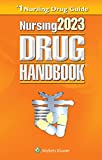
Pharmacology and the Nursing Process
The 10th edition of Pharmacology and the Nursing Process offers practical, user-friendly pharmacology information. The photo atlas contains over 100 unique illustrations and photographs depicting drug administration techniques. Updated drug content reflects the most recent FDA drug approvals, withdrawals, and therapeutic uses.

Mosby’s Pharmacology Memory NoteCards: Visual, Mnemonic, and Memory Aids for Nurses
The 6th edition of Mosby’s Pharmacology Memory NoteCards: Visual, Mnemonic, & Memory Aids for Nurses incorporates illustrations and humor to make studying easier and more enjoyable. This unique pharmacology review can be utilized as a spiral-bound notebook or as individual flashcards, making it ideal for mobile study.
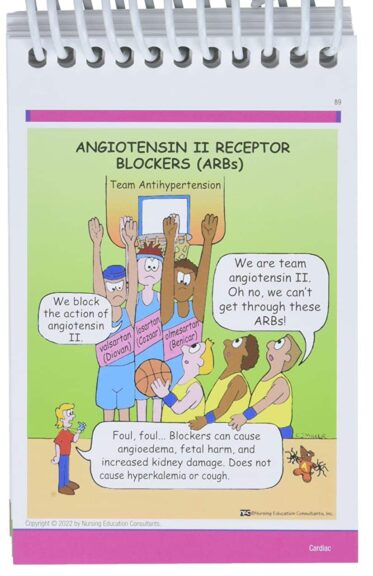
See Also
Here are other nursing pharmacology study guides:
- Nursing Pharmacology – Study Guide for Nurses
Our collection of topics related to nursing pharmacology - Pharmacology Nursing Mnemonics & Tips
These nursing mnemonics aim to simplify the concepts of pharmacology through the use of a simple, concise guide. - Generic Drug Name Stems Cheat Sheet
Learn about these generic drug name stems to help you make sense of drugs easier! - Common Drugs and Their Antidotes
A guide to drug antidotes that nurses should be familiar about. - IV Fluids and Solutions Guide & Cheat Sheet
Get to know the different types of intravenous solutions or IV fluids in this guide and cheat sheet. - Drug Dosage Calculations NCLEX Practice Questions (100+ Items)
Care to take the challenge? This quiz aims to help students and registered nurses alike grasp and master the concepts of medication calculation.
We have a pill for that…
Drug Guides NEW!
Individual drug guides and nursing considerations for the most common medications used in nursing pharmacology:
- Acetaminophen (Tylenol)
- Aspirin
- Atorvastatin (Lipitor)
- Enoxaparin (Lovenox)
- Furosemide (Lasix)
- Gabapentin
- Hydromorphone (Dilaudid)
- Lisinopril
- Metoprolol
- Morphine
Gastrointestinal System Drugs
Respiratory System Drugs
- Antihistamines
- Bronchodilators and Antiasthmatics
- Decongestants
- Expectorants and Mucolytics
- Inhaled Steroids
- Lung Surfactants
Endocrine System Drugs
- Adrenocortical Agents
- Antidiabetic Agents
- Glucose-Elevating Agents
- Hypothalamic Agents
- Insulin
- Parathyroid Agents: Bisphosphonates, Calcitonins
- Pituitary Drugs
- Sulfonylureas
- Thyroid Agents
Autonomic Nervous System Drugs
- Adrenergic Agonists (Sympathomimetics)
- Adrenergic Antagonists (Sympatholytics)
- Anticholinergics (Parasympatholytics)
- Cholinergic Agonists (Parasympathomimetics)
Immune System Drugs
Chemotherapeutic Agents
- Anthelmintics
- Anti-Infective Drugs
- Antibiotics
- Antifungals
- Antineoplastic Agents
- Antiprotozoal Drugs
- Antiviral Drugs
Reproductive System Drugs
Nervous System Drugs
- Antidepressants
- Antiparkinsonism Drugs
- Antiseizure Drugs
- Anxiolytics and Hypnotic Drugs
- General and Local Anesthetics
- Muscle Relaxants
- Narcotics, Narcotic Agonists, and Antimigraine Agents
- Neuromuscular Junction Blocking Agents
- Psychotherapeutic Drugs
Cardiovascular System Drugs
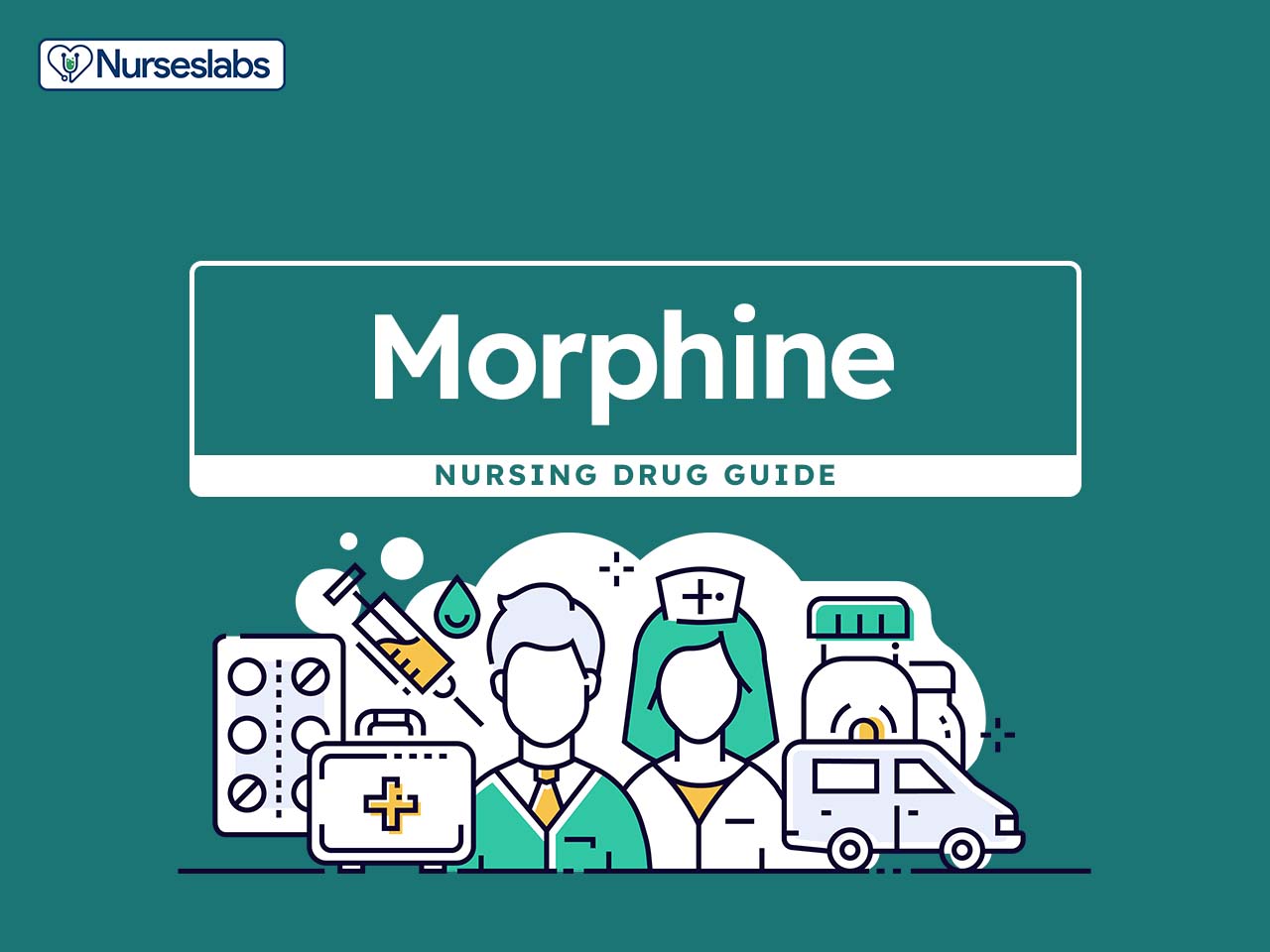







![Furosemide Nursing Considerations and Patient Teaching [Drug Guide]](https://nurseslabs.com/wp-content/uploads/2023/07/Furosemide-480x360.jpg)


![Lisinopril Nursing Considerations and Patient Teaching [Drug Guide]](https://nurseslabs.com/wp-content/uploads/2023/03/Lisinopril-480x360.jpg)


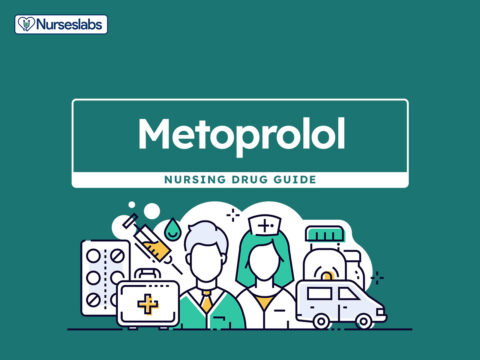
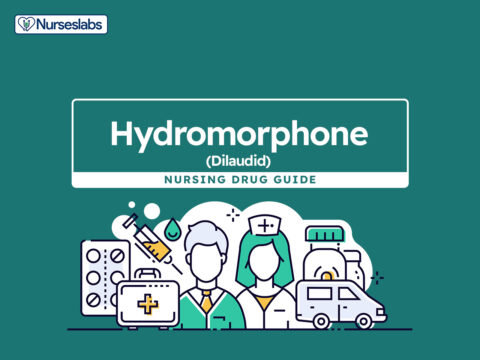




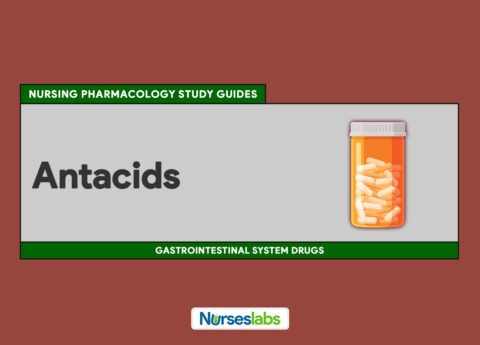
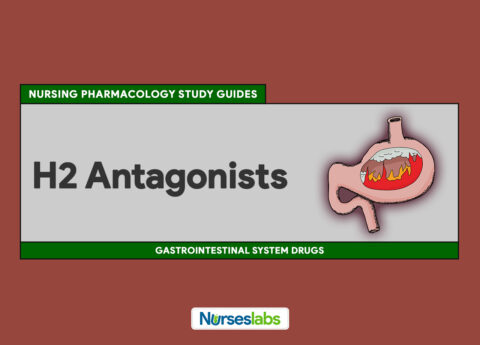
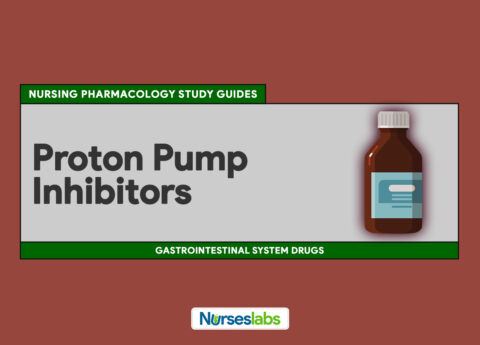
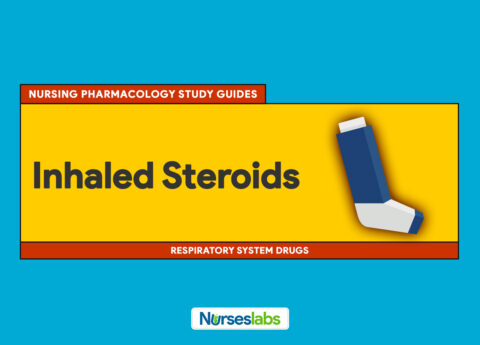


![Lisinopril Nursing Considerations and Patient Teaching [Drug Guide]](https://nurseslabs.com/wp-content/uploads/2023/03/Lisinopril-768x576.jpg)
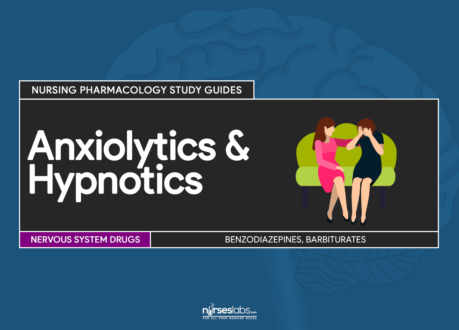
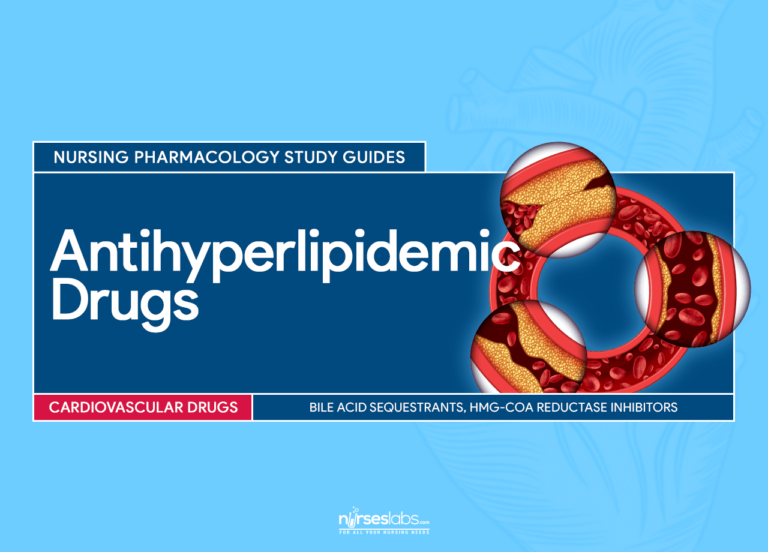


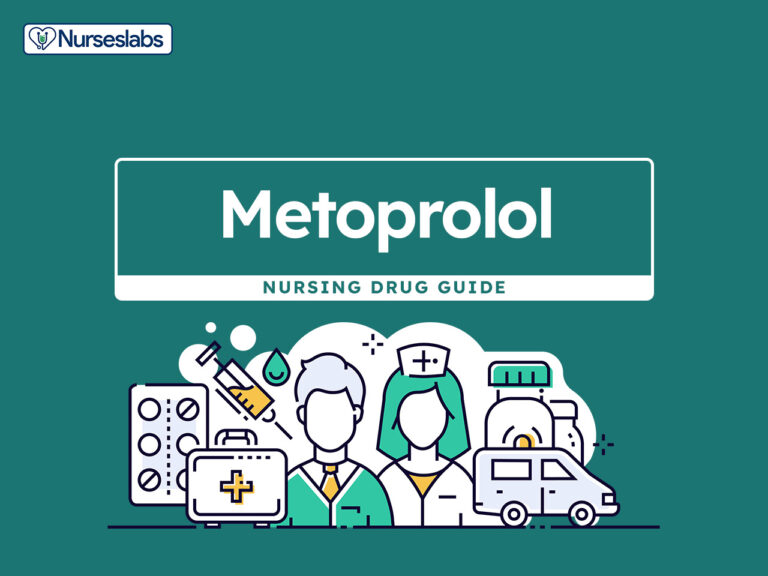
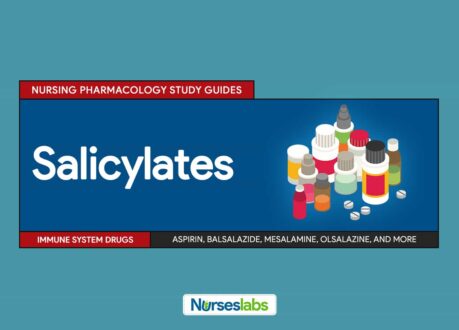

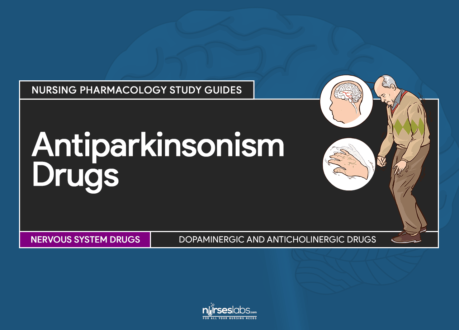
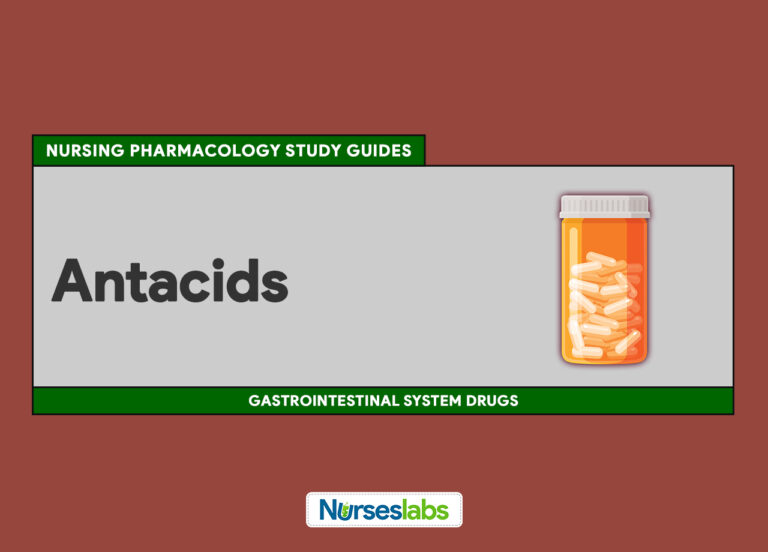
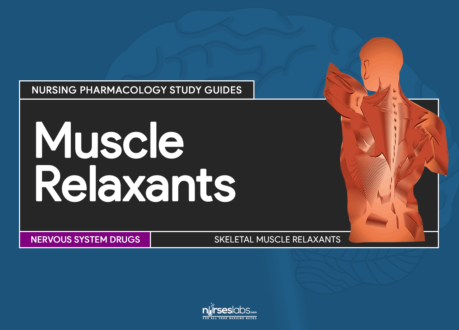
Leave a Comment